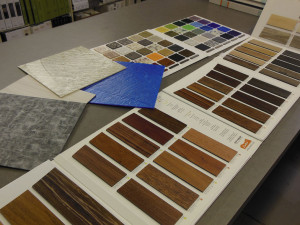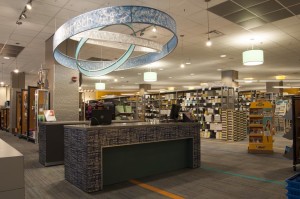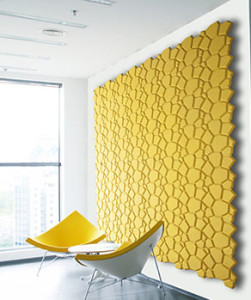Recently, r.o.i. Design was at a bid opening and after hearing the bids for Division 09, it was clear to all that something was “up”. We all are seeing a steady increase in the percentage of costs spent in finishes in projects.
r.o.i. Design has been able to balance budgets by applying specialty finishes with discretion in key areas and working with contractors on the design as a whole, before a project goes to bid. Managing customer expectations at the design phase is key in order to deliver the interior the customer requires.
Some of the areas to watch for creeping costs include:
Hard surface flooring

LVT is available in a wide selection of colors and patterns, including those that mimic wood and stone.
The old stand by – vinyl composite tile (VCT) – which is affordable at install, but adds cost
every year in maintenance, is loosing ground to other composites that don’t have that ongoing expense. There are VET (vinyl enhanced tiles) and LVT (luxury vinyl tiles) whose retail square foot costs are a minimum of $1 more than VCT.
A larger portion of the flooring in projects are receiving hard surfaces verses carpet.
The love for finished concrete isn’t necessarily a budget saver and it’s popularity has demanded more skilled trades in adapting concrete in order to be considered a finished floor.
Wall panels and specialty wall treatments
Wall covering manufacturers have been busy coming up with new materials and designs that are gaining interest. r.o.i. Design doesn’t believe we will ever see projects where 100% of the walls are covered with wall covering as was prevalent in the 90’s, but do see a percentage of the walls being given “special” treatment.
Custom wall covering and panel products are becoming more affordable allowing customers to create “branded” and proprietary looks to their interiors. Part of that customization means the finish category is fulfilling more of the signage requirements of a building.
Ceilings
 Changes in technology have advanced product design and improved product performance. But the first wave of those innovations come at a higher price. The cycle of new product introduction is more robust, and increased competition will start to impact costs on trendy finishes in a positive direction.
Changes in technology have advanced product design and improved product performance. But the first wave of those innovations come at a higher price. The cycle of new product introduction is more robust, and increased competition will start to impact costs on trendy finishes in a positive direction.

